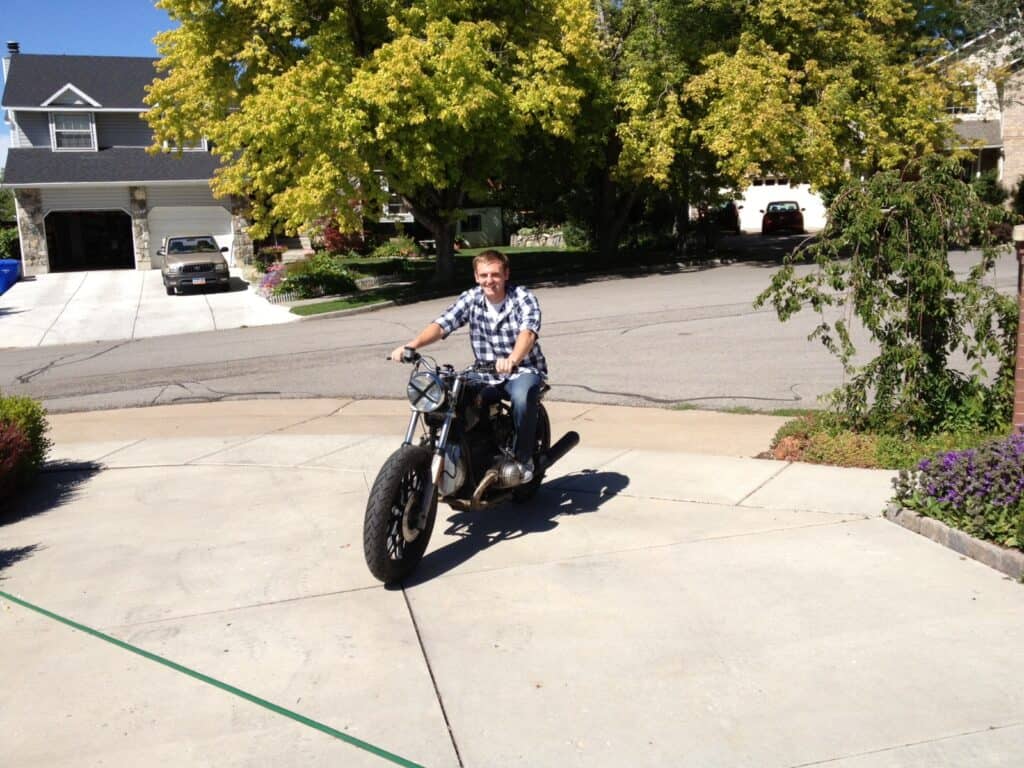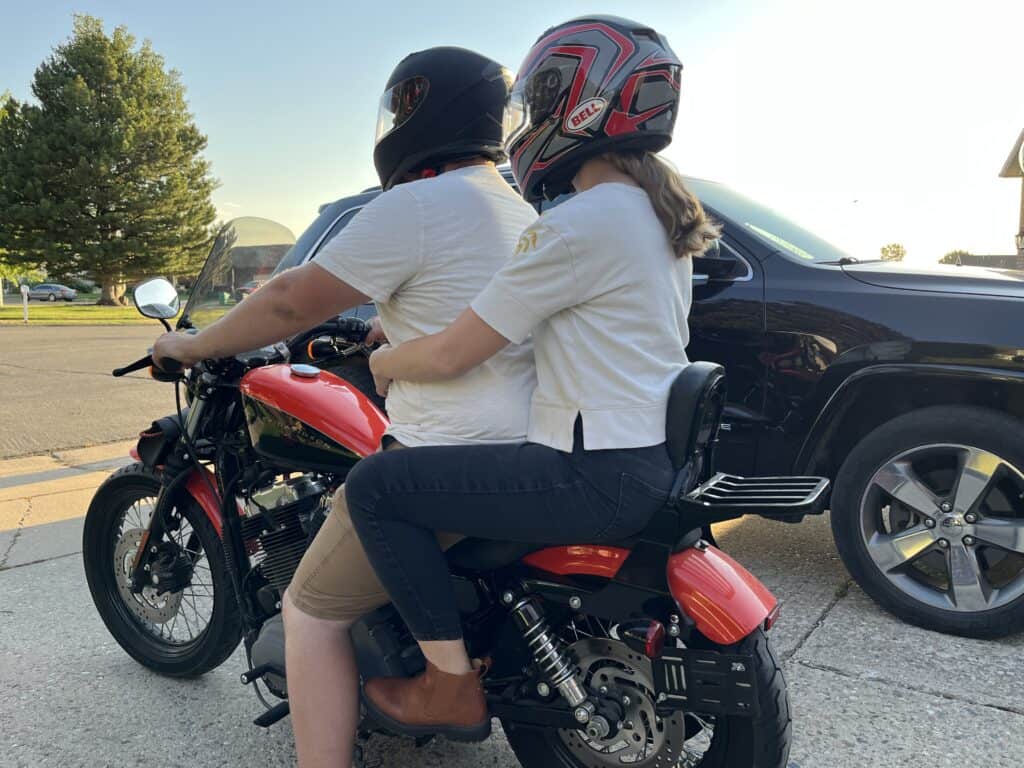
For many, receiving a driver’s license is a rite of passage. It signifies an individual’s ability to safely operate a vehicle and experience the freedom that comes with it. There are different types of licenses and several endorsements available, including a motorcycle license/endorsement.
What is the difference between a motorcycle permit and a license? A motorcycle permit is a legal temporary document giving permission from the government to an individual to operate a motorcycle under certain conditions, whereas a motorcycle license has those restrictions removed for the individual.
Some states refer to permits as restricted licenses. Much like a normal driving learner’s permit, a motorcycle learner’s permit is for those learning to ride and seeking a license. State law may require taking a riding course and many states offer such courses.
Differences Between A Motorcycle Permit And License
In order to legally operate a motorcycle on public roadways, it is required to have either a permit or license. However, a permit and a license are not the same and should not be treated as such. State law dictates the requirements for a permit or a license. So, what is the difference between a motorcycle permit and a license?
In order to obtain a permit, you must already have a regular driver’s license. There are usually restrictions based on age. Younger riders, typically under 21 years old, will likely have more restrictions for safety reasons. This may include riding only during the daytime and not allowing passengers.
Permits are just temporary and will expire. Only get a permit with the intent of pursuing a license. There may be restrictions on how often an individual may obtain a permit.
A license is legal proof of competency as a driver. All states require taking a knowledge test and/or a skills test before obtaining a license. A license loses the restrictions that a permit has as the rider has proven their ability. There is a fee tied to getting a license and the amount varies by state but it can be roughly $30-$50 or more.

Another state-to-state variance is a motorcycle license versus an endorsement. Simply put, an endorsement is a way to indicate a driver’s ability without requiring a different license. An endorsement is usually indicated by a letter and is visible on your license. There are several endorsements for various applications. With that being said, there are some states that have a motorcycle license, often called an M class license, so be aware of your local requirements.
There is an international license for those who want to ride abroad. Some countries accept a U.S. license, but look into the requirements of the country you are visiting. AAA is a viable path to obtaining an international license and the process usually includes providing passport information, fees, and drivers license documentation.
How To Get A Motorcycle Permit
If you are ready to take the plunge and get your permit there are a few steps to take.
The first step to take is to go online and review your state’s requirements. For example, the Nevada DMV website has a page dedicated to motorcycle information and is fairly comprehensive and easy to navigate.
For riders under 18, permit lasts 1 year and can be renewed several times until the person is 18 years old. Younger riders must complete 50 hours of supervised riding and either pass a safety course or ride 50 more hours if a course is unavailable.
If the rider is 18 years of age or older, they may opt-out of a permit but that the rider may not operate the motorcycle until a class M license is issued upon passing a skills test.
A permit allows a rider to learn and prepare for the knowledge and skills test. A permit is typically valid for 6 months and the rider must be supervised by a licensed rider over 21 years old and has at least one year of experience. This ensures a safe environment to learn.
Keep in mind that a permit does prohibit you from doing certain activities on a motorcycle. I was living in Utah when I had my riding permit. I was not permitted to ride at night or ride with any passengers until I got my license since that was Utah law.
How To Get A Motorcycle License
Upon meeting the conditions of the permit, there are a few more steps to take before obtaining a license. We will continue with the Nevada DMV requirements.
Riders must pass a knowledge test before passing a skills test. It’s best to schedule ahead for the test and have an ID and permit information with you at the test. In Nevada, skills tests are only offered in a couple of places, but those places are close to populated areas.
There is a test preview available; additional test prep can be found on other sites. It appears that failing the Nevada test two or more times permanently disqualifies that individual from future permits. The Nevada test costs $26 in addition to licensing fees.
In Nevada, a class M license is issued instead of adding an endorsement to an existing license. There are a few restrictions to Nevada class M licenses regarding motorcycle size. If the motorcycle that is used for the test is under either 90cc or 50cc, the license is restricted to those sizes respectively. In other words, it would not be legal to operate a bike larger than these sizes under those restrictions.
Once all the tests have been passed and fees paid, the license comes in the mail. Nevada requires helmets for all motorcycle riders and must meet the standards of the US DOT. After that, you’re all set to hit the open road.
Again, this was just an example using the Nevada DMV website. As with other driver’s licenses, it must be obtained in the state of residence. Be sure to look into your local requirements and follow those specific instructions. There may not be much variance, but be sure to follow local laws and regulations.
Consequences Of Riding Without The Right Type Of Licensing

As it so happens, we have an article titled “What Happens If You Ride A Motorcycle Without A License?” that dives deep into this topic. There are a few points to make as it relates to this article but will be a bit abbreviated compared to the other article.
It should be clear that operating a motorcycle without a license is illegal. These kinds of laws are written to promote safe and capable riding on public roadways. Ignoring these rules puts others in danger. This is especially true when it comes to motorcycles because it requires a different skillset to safely operate a motorcycle.
Riding without a license is a misdemeanor and offenders can be issued a hefty fine. The fine will depend on any previous offenses or the specific circumstances of the offense, but fines can be as much as $1000 or more. Contrast this to the cost of getting a license and it is far more frugal to invest in a license.
Penalties for riding without a license are compounded when a license has previously been revoked. This means the rider committed some infraction for which the punishment was to take away their license. Under these conditions, the penalty could even include jail time. It is a very serious issue and should not be regarded lightly.
Along with a driver’s license, you are required to register and license your motorcycle. This helps track ownership of vehicles and riding without registration can carry a fine. Registering your bike is fairly simple, depending on the state and local DMV. You will likely need a title for the bike and your identification in order to register. Check your local DMV website for all the details.
State laws also require proof of insurance. Such laws are in place for the protection of all who use the roadways. Not having proof of insurance coupled with not having a license makes for a very serious offense.
There are exceptions to some of these rules. On small motorcycles, 49cc’s or smaller, it is not required to have a license to operate. This is likely because these small bikes are not likely to be in public roadways. Likewise, the skill required to operate smaller bikes is not as specialized as riding other bikes, so it is generally safer. However, know and follow local laws just in case.
Conclusion
If you are looking to get into riding, be sure to get a learners permit. Have an experienced friend show you the ropes or sign up for a safety course in your area. Getting your motorcycle license requires taking and passing a test. Once that happens, hit the open road and enjoy.
Be sure to keep your license current and have it with you when riding. Riding without a license carries some hefty fines and is altogether avoidable by following the local laws.
